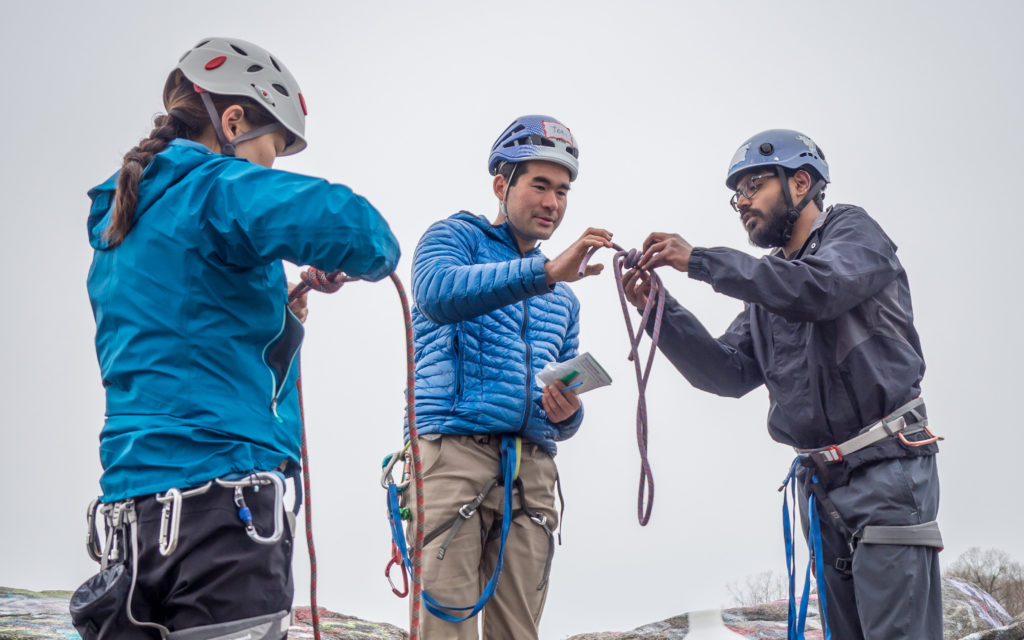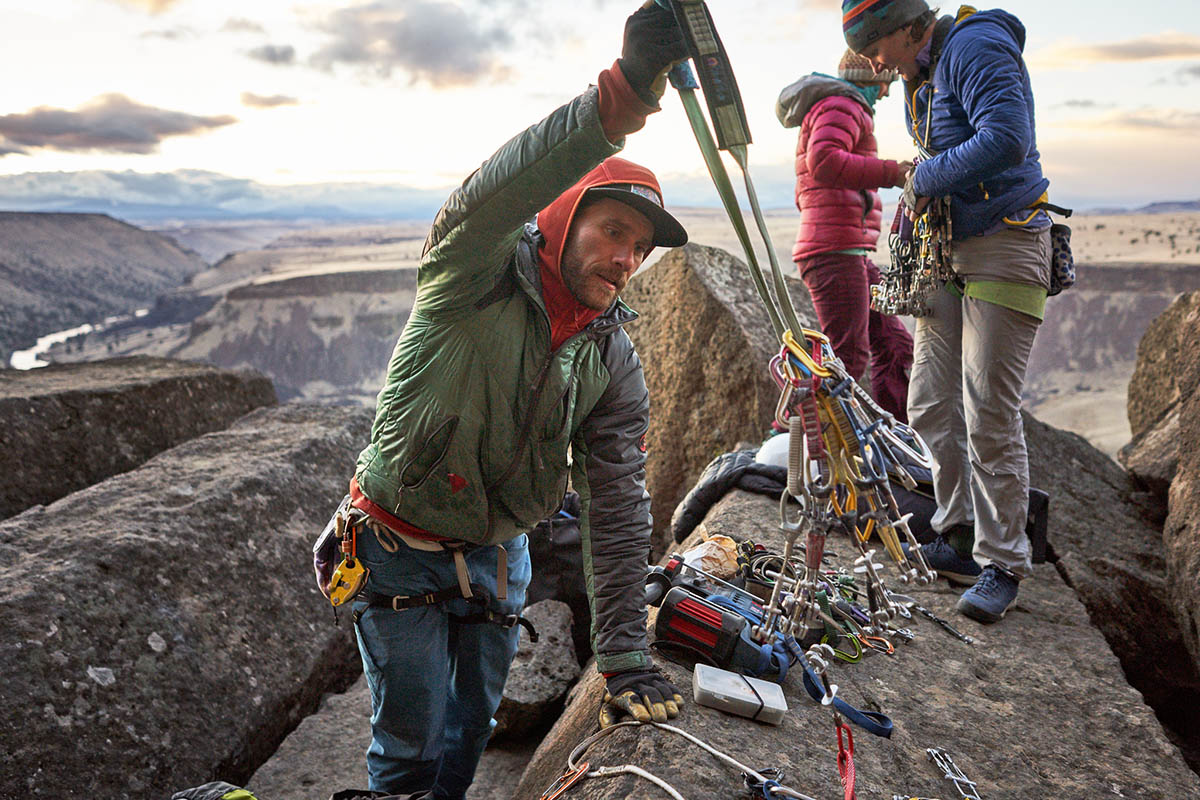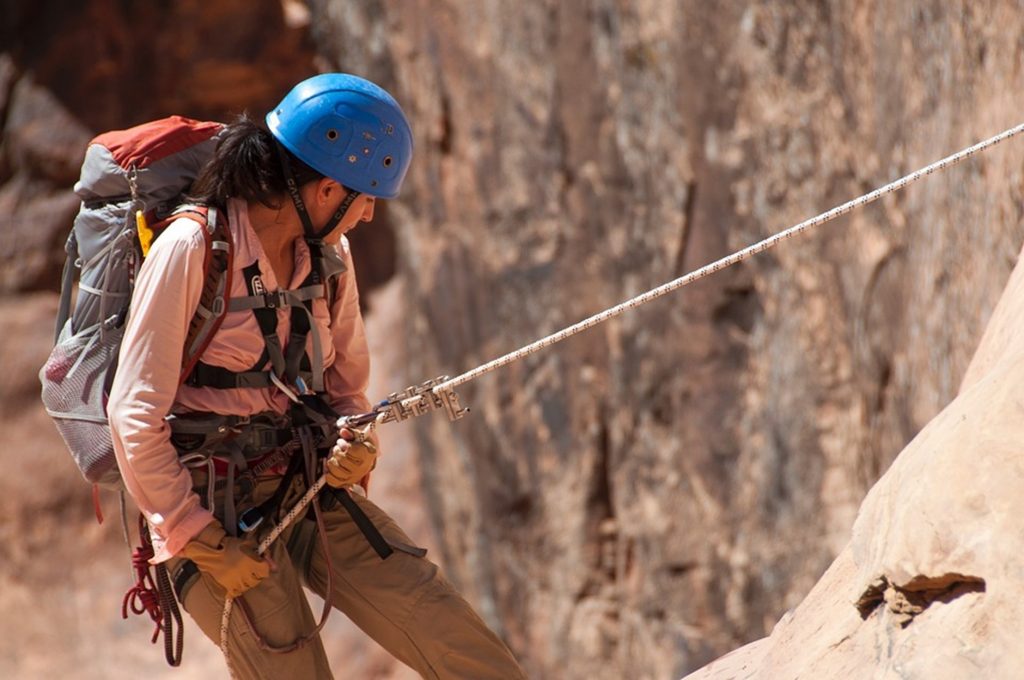I. Introduction
(A) Unleashing the Thrill of Rock Climbing: Embarking on a Vertical Adventure
Rock climbing offers a thrilling and challenging activity that tests your physical and mental fortitude. It’s a sport that allows you to conquer your fears, build strength and endurance, and experience the exhilaration of reaching new heights.
(B) Essential Gear for Rock Climbing: Equipping Yourself for Safety and Success
Before you embark on your vertical adventure, ensure you have the right equipment. Rock climbing accessories play a crucial role in keeping you safe, comfortable, and performing at your best. This guide delves into the essential gear every climber needs, along with advanced options to elevate your skills and explore specialized climbing disciplines.

II. Safety Essentials: The Foundation of Rock Climbing
(A) Climbing Helmet: Protecting Your Head from Impacts and Falls
A climbing helmet is paramount for safety. It acts as a protective barrier, absorbing the impact of falls and shielding your head from bumps and scrapes against the rock face. Choose a helmet that fits comfortably and securely, and ensure it meets the latest UIAA (International Climbing and Mountaineering Federation) safety standards.
(B) Climbing Harness: Distributing Impact Forces and Providing a Secure Anchor Point
A climbing harness is a crucial piece of equipment. It distributes the force of a fall across your legs and hips, minimizing the risk of injury. Select a harness that fits snugly but allows for ease of movement. Look for features like adjustable leg loops, a belay loop for attaching yourself to the belay system, and haul loops for carrying gear on big wall climbs.
(C) Climbing Carabiners: Connecting Ropes, Harnesses, and Anchors
Carabiners are versatile metal connectors that link various climbing components. They are used to connect ropes to your harness, belay device, and anchors. Choose carabiners with a locking mechanism, such as screw-gate or twist-lock carabiners, to prevent accidental detachment. Always double-check that carabiners are properly locked before climbing.
(D) Climbing Belay Device: Controlling the Descent of a Climbing Partner
A belay device is a specialized tool used by the climber on the ground (belayer) to control the descent of their climbing partner. It allows the belayer to manage the rope, providing slack for climbing and applying friction to safely lower the climber down the rock face.
(E) Climbing Chalk Bag: Keeping Your Hands Dry and Grippy
Sweat and moisture can make it difficult to grip the climbing holds. A chalk bag holds climbing chalk, a powdered magnesium carbonate that absorbs moisture and improves your hand grip. Choose a chalk bag that attaches comfortably to your harness and allows for easy access during your climb. Look for breathable materials that prevent chalk dust buildup inside the bag.

III. Enhancing Your Climb: Specialized Rock Climbing Accessories
(A) Climbing Shoes: Providing Grip, Support, and Comfort for Your Feet
Climbing shoes are specifically designed for climbing, offering superior grip, support, and sensitivity compared to regular shoes. Different climbing shoe types cater to various climbing styles and skill levels. Consider factors like stiffness, closure system (lace-up or Velcro), and intended use (bouldering, sport climbing, trad climbing) when selecting your climbing shoes.
(B) Climbing Gloves: Protecting Your Hands from Friction and Injuries
Climbing gloves can protect your hands from scrapes, blisters, and calluses caused by friction against the climbing holds. They can also provide additional grip, especially helpful for challenging climbs or climbers with sensitive skin. However, some climbers prefer the feel of bare rock on their hands for optimal grip and sensitivity.
(C) Ascending Devices: Assisting in Rope Climbing and Reducing Fatigue
Ascenders are mechanical devices that help climbers ascend ropes with greater ease. They are particularly useful for big wall climbing or situations where frequent rope ascents are required. Ascenders reduce fatigue by allowing climbers to use their legs for power instead of their arms, making long climbs more manageable.
(D) Descending Devices: Providing a Controlled Descent and Rappelling
Rappelling devices, also known as descenders, are used for controlled descents and rappelling down climbing routes. They allow climbers to safely descend a rope at a controlled speed, using friction to manage the descent. There are various types of descenders, each with its own advantages and disadvantages.
(E) Climbing Tape: Protecting Your Fingers and Improving Grip
Climbing tape, also known as kinesiology tape, can be applied to fingers to protect them from injuries and improve grip on small holds. It can also be used to support sore muscles and joints or enhance proprioception, the body’s awareness of its position in space. Choose tape with good adhesion that won’t irritate your skin and be sure to apply it correctly to avoid restricting blood flow.

IV. Choosing the Right Gear: Considerations for Rock Climbers
(A) Skill Level and Experience: Matching Accessories to Your Climbing Abilities
When selecting climbing accessories, consider your skill level and experience. Beginners may prioritize essential safety gear like a helmet and harness, while advanced climbers might invest in specialized shoes or ascending devices. Matching your gear to your current climbing abilities ensures you have the right tools to progress safely and effectively.
(B) Climbing Style and Preferences: Selecting Gear that Suits Your Climbing Approach
Different climbing styles benefit from specific gear choices. Technical climbers focused on precise movements might prefer stiffer climbing shoes for edging and small footholds. Sport climbers tackling long, overhanging routes might prioritize comfortable harnesses with good weight distribution. Understanding your climbing style and preferences will help you select gear that complements your approach.
(C) Climbing Environment: Considering Indoor or Outdoor Climbing Needs
Climbing environments can vary. Indoor climbing gyms typically offer controlled temperatures and textured climbing walls, while outdoor climbing exposes you to weather elements and natural rock formations. For outdoor climbing, consider footwear and clothing suitable for the terrain and weather conditions. Opt for durable shoes with good traction for uneven surfaces and choose breathable clothing that protects you from the elements.
(D) Personal Comfort and Fit: Ensuring a Comfortable and Secure Fit
Climbing gear should fit comfortably and securely. Try on helmets and harnesses before purchasing to ensure a snug but non-restrictive fit. Climbing shoes should be snug but allow for some wiggle room to accommodate blood flow during exertion. Improperly fitted gear can be uncomfortable, hinder your performance, and even pose safety risks.
(E) Budget and Quality: Balancing Cost with Durability and Performance
Climbing gear can range in price depending on brand, features, and materials. While budget is a consideration, prioritize quality over extreme cost-saving measures. Invest in durable and reliable gear that will ensure your safety and enhance your climbing experience in the long run. Look for reputable brands known for their safety standards and consider used gear options from trusted sources if budget is a major concern.

V. Safety First: Essential Tips for Using Rock Climbing Accessories
(A) Inspecting Gear: Checking for Wear, Damage, or Faulty Components
Before each climb, thoroughly inspect your climbing accessories for any signs of wear, damage, or malfunction. Check for frayed ropes, worn carabiners, or loose stitching on your harness. Never use compromised equipment that could put your safety at risk. Develop a pre-climb routine to ensure all your gear is in good working order.
(B) Proper Use and Techniques: Following Manufacturer Instructions and Learning Correct Techniques
Always follow the manufacturer’s instructions for using your climbing accessories. Familiarize yourself with proper belaying techniques, rope handling, and how to use specialized equipment like ascenders and descenders. Consider taking climbing courses from certified instructors to learn proper techniques and safety protocols.
(C) Regular Maintenance: Maintaining Gear to Ensure Optimal Performance and Safety
Regular maintenance extends the lifespan and ensures the optimal performance of your climbing gear. Clean your climbing rope periodically following the manufacturer’s instructions. Wash your chalk bag to remove sweat and accumulated chalk dust. Inspect carabiners and other metal components for corrosion, and ensure their locking mechanisms function smoothly.
(D) Seeking Guidance: Consulting Experienced Climbers or Instructors
Don’t hesitate to seek guidance from experienced climbers or certified instructors. They can provide valuable advice on choosing the right gear, proper technique, and safe climbing practices. Climbing communities are often welcoming and willing to share their knowledge with newcomers.
(E) Prioritizing Safety: Always Prioritizing Safety and Avoiding Risky Situations
Safety should always be your top priority while rock climbing. Climb within your limits, never attempt risky maneuvers beyond your skill level, and communicate clearly with your climbing partner. If you feel uncomfortable or unsure, don’t hesitate to descend and reassess the situation. Climbing is a rewarding activity, but prioritizing safety ensures you can continue to enjoy it for years to come.
